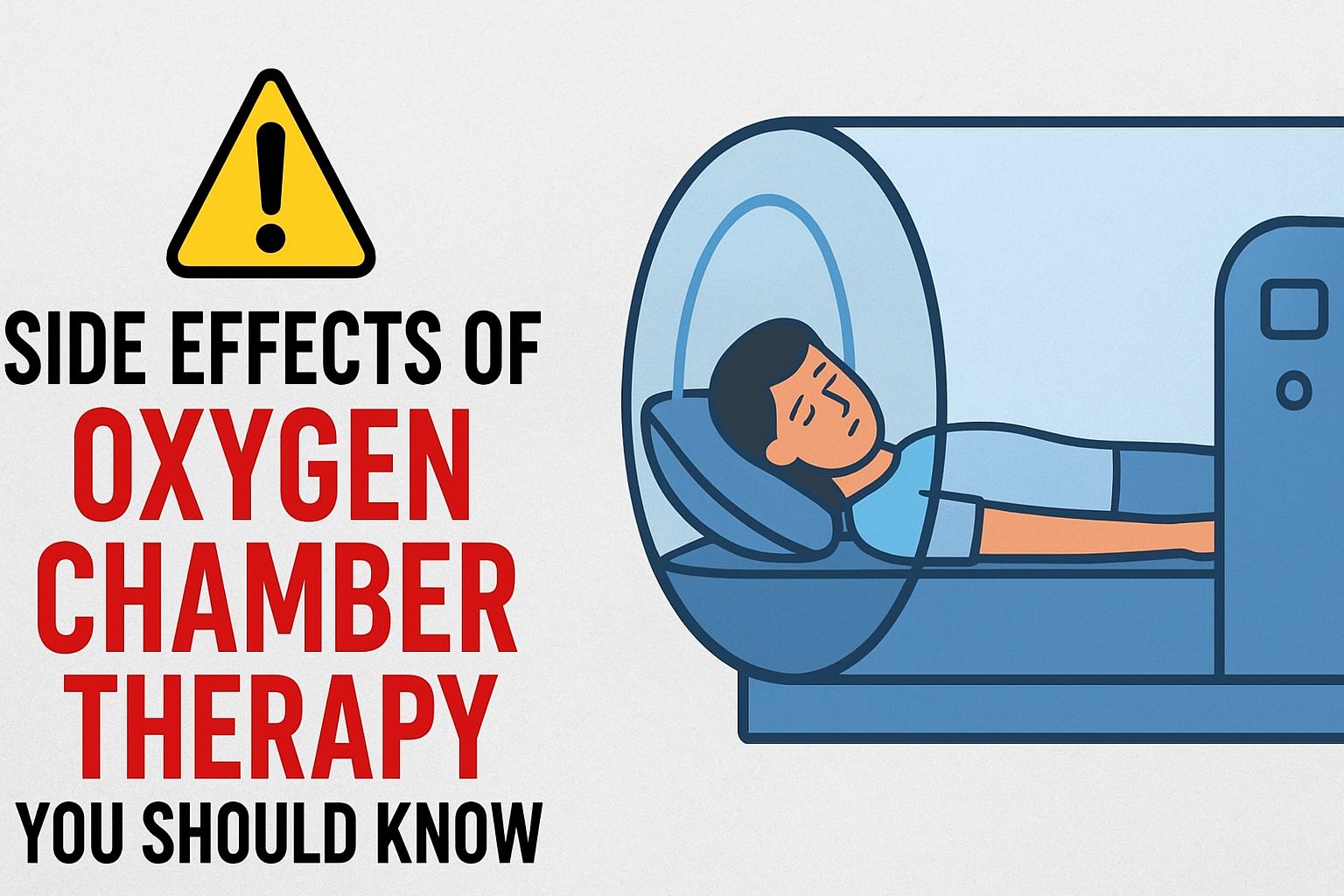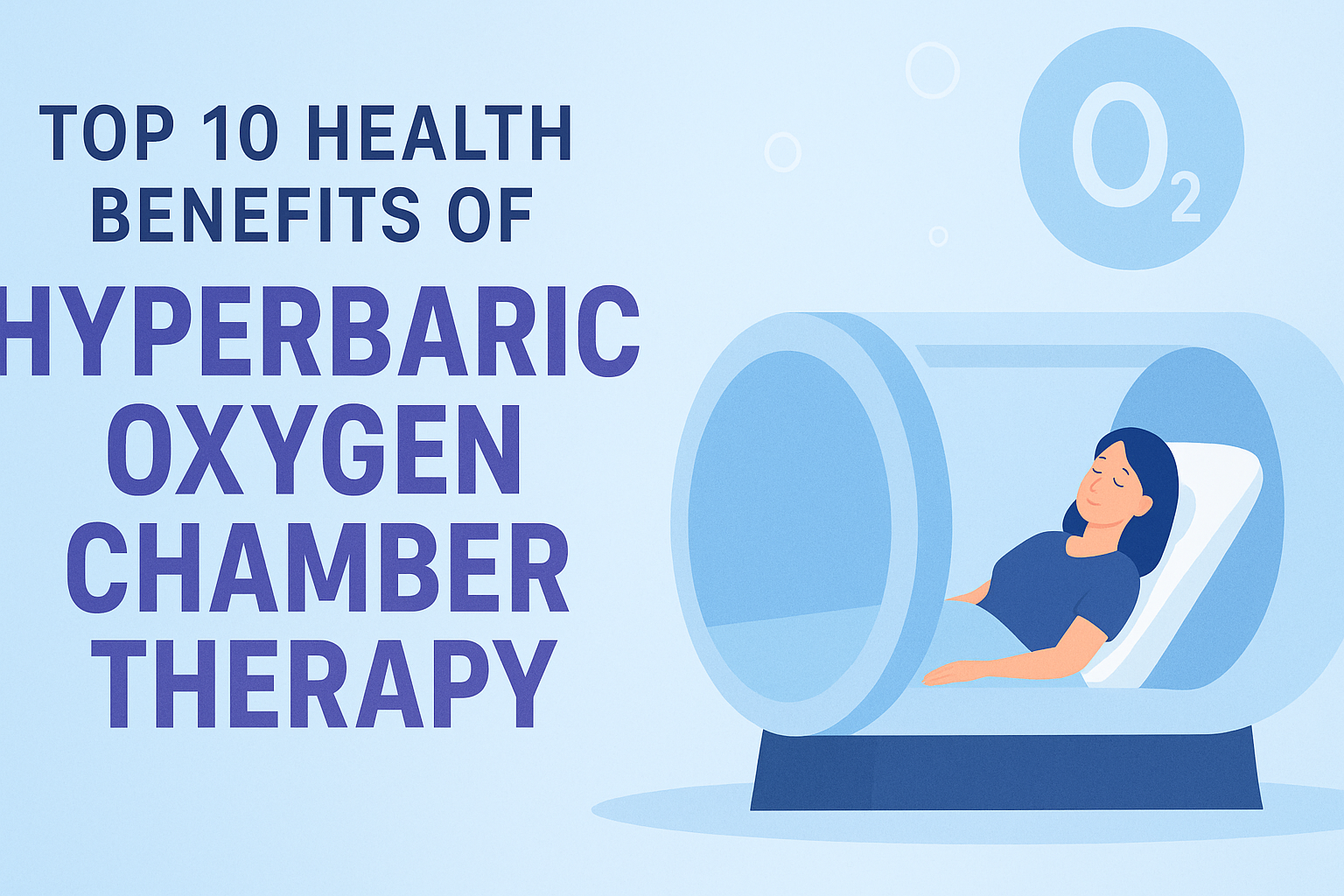Hyperbaric Oxygen Therapy (HBOT), commonly known as oxygen chamber therapy, has gained widespread popularity in recent years for its healing and wellness benefits. By allowing patients to breathe 100% oxygen in a pressurized chamber, HBOT can accelerate recovery, improve circulation, reduce inflammation, and support overall wellness.
However, while it offers many potential benefits, oxygen chamber therapy is not without risks. Understanding the possible side effects of HBOT is crucial for anyone considering this treatment — whether for medical reasons, sports recovery, or general health optimization.
This detailed guide covers the common, mild, and rare side effects of oxygen chamber therapy, along with safety tips to minimize potential risks.
What is Oxygen Chamber Therapy?
Oxygen chamber therapy involves sitting or lying inside a hyperbaric chamber where the air pressure is 1.5 to 3 times higher than normal atmospheric pressure. This allows the lungs to absorb more oxygen, which is then carried by the blood to promote healing and regeneration.
HBOT is commonly used to treat:
- Decompression sickness (divers’ disease)
- Carbon monoxide poisoning
- Chronic non-healing wounds (diabetic ulcers)
- Radiation injury
- Severe infections
- Sports-related injuries and recovery
Why Knowing the Side Effects Matters
While HBOT is generally considered safe when performed under medical supervision, there are still potential risks. Being aware of these side effects of oxygen chamber therapy helps you:
- Make an informed decision before starting therapy
- Recognize warning signs early
- Take preventive measures to avoid complications
- Ensure you receive treatment in a safe, controlled environment
Common Side Effects of Oxygen Chamber Therapy
Here are the most frequently reported side effects of HBOT.
1. Ear Discomfort and Barotrauma
The most common side effect is ear barotrauma, caused by the increased air pressure in the chamber.
Symptoms may include:
- Ear popping
- Mild ear pain
- Temporary hearing changes
This is similar to what you might feel during takeoff and landing on an airplane. In rare cases, untreated barotrauma can lead to eardrum rupture.
Prevention Tip: Learn how to equalize pressure (yawning, swallowing, or using the Valsalva maneuver) during therapy sessions.
2. Sinus Pressure and Congestion
Some people experience sinus pain or congestion due to pressure changes. This is usually temporary and resolves after the session ends.
Prevention Tip: Avoid therapy if you have a cold or sinus infection, as it can worsen discomfort.
3. Temporary Vision Changes
Prolonged HBOT sessions can cause temporary nearsightedness (myopia) due to changes in the lens of the eye.
Good News: This usually resolves within days or weeks after stopping therapy.
4. Fatigue After Sessions
Many patients feel tired or lightheaded after their first few sessions. This is a normal response to increased oxygen intake and usually improves over time.
Prevention Tip: Rest after each session and stay hydrated to help your body adjust.
5. Skin Itching or Mild Rash
Some individuals report mild skin irritation or itching due to the pressurized oxygen environment. This typically goes away quickly and doesn’t require treatment.
Rare but Serious Side Effects
Although rare, these side effects require medical attention:
6. Oxygen Toxicity
Breathing pure oxygen at high pressure for long periods can sometimes lead to oxygen toxicity, which may affect the lungs or central nervous system.
Possible symptoms:
- Coughing or chest pain
- Seizures (extremely rare)
Prevention Tip: Certified HBOT clinics monitor exposure time carefully to minimize this risk.
7. Lung Collapse (Pulmonary Barotrauma)
Sudden pressure changes can, in rare cases, lead to a collapsed lung (pneumothorax). This is extremely uncommon but serious.
Prevention Tip: Disclose any existing lung conditions (like COPD) before starting HBOT.
8. Claustrophobia or Anxiety
Some patients may feel anxious or claustrophobic inside the enclosed chamber.
Prevention Tip: Try a transparent chamber or ask the technician to stay in communication with you throughout the session.
9. Low Blood Sugar (in Diabetic Patients)
HBOT can temporarily lower blood glucose levels. Diabetic patients should closely monitor their blood sugar before and after sessions to avoid hypoglycemia.
10. Seizures (Extremely Rare)
Seizures are very rare and usually related to prolonged exposure to high oxygen concentrations. Medical staff are trained to respond quickly in such cases.
Who Should Avoid Oxygen Chamber Therapy?
While HBOT is safe for most people, it may not be suitable if you have:
- Untreated pneumothorax (collapsed lung)
- Severe congestive heart failure
- High fever
- Certain ear infections
- Severe claustrophobia
- Respiratory infections
Always consult your doctor before starting HBOT, especially if you have underlying health conditions.
Tips for a Safe HBOT Experience
- Choose a certified clinic with trained professionals.
- Discuss your medical history with your doctor before starting therapy.
- Follow pre-session instructions such as removing makeup, lotions, and synthetic fabrics (to reduce fire risk in oxygen-rich environments).
- Equalize ear pressure during pressurization and depressurization.
- Report any discomfort immediately to the supervising technician.
Conclusion
Oxygen chamber therapy offers incredible benefits — from speeding up wound healing to enhancing recovery and boosting overall wellness. However, like any medical treatment, it comes with potential side effects ranging from mild ear discomfort to rare but serious risks like lung barotrauma.
By understanding these side effects, consulting a qualified healthcare provider, and receiving treatment in a safe, monitored environment, you can minimize risks and maximize the benefits of HBOT.



